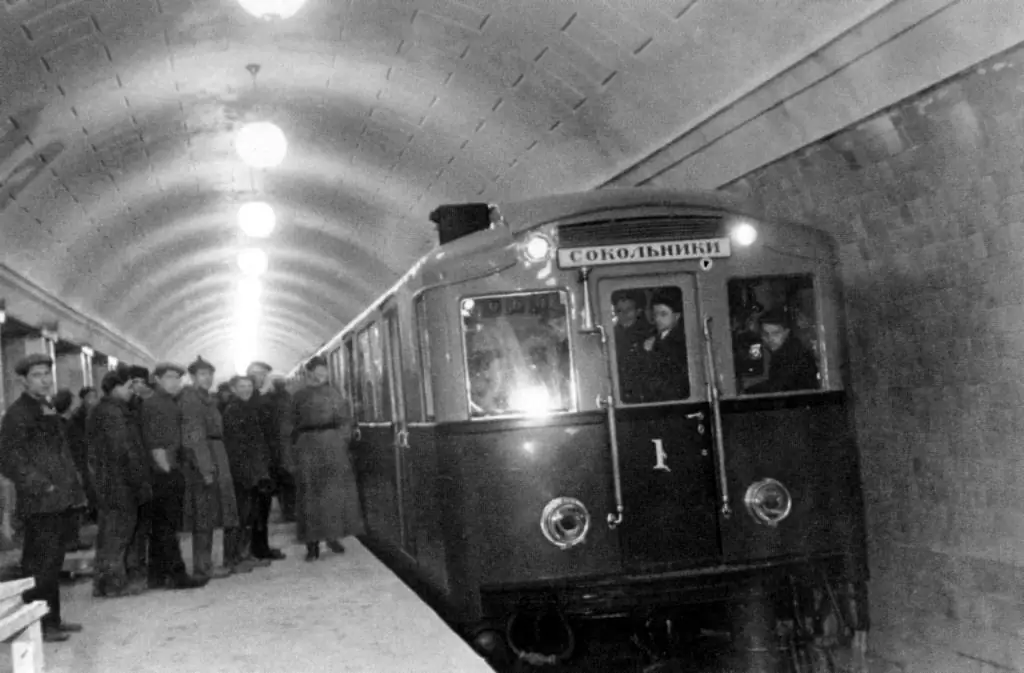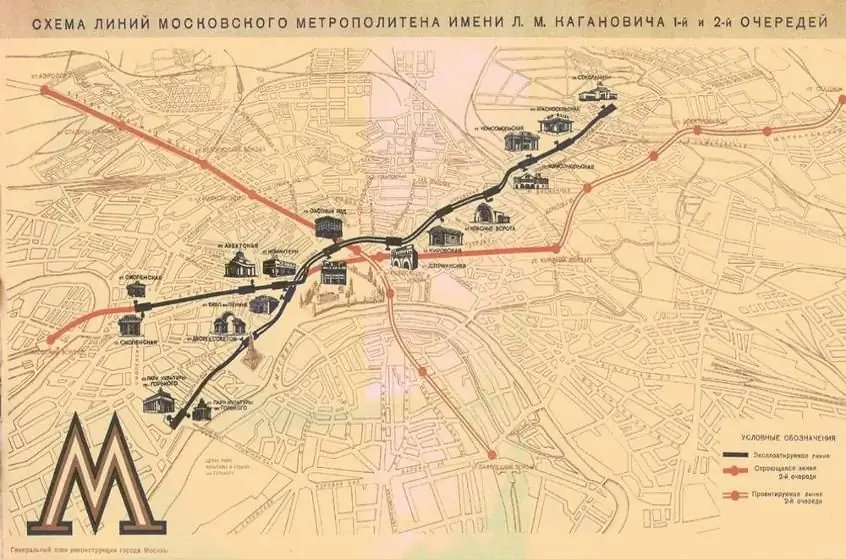The Moscow Metro is one of the largest in the world. With more than two hundred stations and a length of 350 km, every day, like a giant organism, millions of residents of the metropolis pass through it. Among other things, the Moscow metro is one of the most beautiful, clean and deep in the world.

The project of the very first metro in Moscow
The idea of laying the subway sat in the minds of the upper strata of society back in the days of the Russian Empire. Even then, there were attempts to design such a network of roads. And it happened in those distant years. If the idea came true, the Moscow metro, today, would not only be one of the largest, but would have a longer history.
In 1875, engineer Titov began to agitate and spread among the highest ranks of Moscow the idea of creating a railway tunnel connecting the Kursk railway station with Maryina Roscha. It was planned to lay it through Lubyanskaya and Trubnaya squares.
The first metro in Moscow could have been created in 1902, when the designer of the Trans-Siberian railwayEvgeny Knorre, together with his colleague Petr Belinsky, decided to express their ambitions in the form of an attempt to convince high-ranking officials to create a network of "urban railways of high speed off-street traffic."
But in the same year the project was rejected due to, according to officials, many shortcomings. A large role in the infrastructure of the city was then played by an extensive tram network, which brought a considerable income to the city. The creation of the subway was then unprofitable.
Construction of the Moscow metro under Soviet rule
The third attempt to implement such a large project was made in 1923. The workload of Moscow's infrastructure at that time was simply colossal, it was necessary to find a solution that would help to cope with this problem. That is why the city administration was forced to turn to foreign engineers who were supposed to draw up a plan for the construction of the first metro in Moscow. And when the project, consisting of 86 stations and tunnels with a total length of 80 km, was ready, the state did not have enough money to implement it.
The first metro line in Moscow
Earlier, the idea arose to create a subway that could unload the infrastructure of the capital. The task was not easy - to create a tunnel at a great depth, while not having specialists in this field and the necessary equipment in our state. The project for the creation of the first metro in Moscow was put forward on October 10, 1931. The deep method of laying the stations was chosen to preserve the original appearance of Moscow. For the construction of the first metro line wasdecided to hire engineers from abroad.

The construction was completed in record time - a few years later. On May 15, 1935, the first Moscow metro trains began carrying passengers. The metro also played a paramount role during the Great Patriotic War, it served as a bomb shelter for the inhabitants of the city, and during the entire war its activities were stopped only once for one day. This was due to the tense situation at the front, when the city was preparing to resist the troops of the Third Reich.
Architectural features of the Moscow metro - the first stages of construction
Debutant stations have one feature, in addition to their original functions of transporting passengers. The first metro in Moscow was particularly pompous and pompous. Each of them was unique, they were all made in the style of social media. realism. At that time, the state focused on excessive luxury in architectural terms. This was argued by the fact that the state does everything in the name of the people. It does it qualitatively and indecently luxuriously, which the capitalist countries cannot afford. The symbol of the Moscow Metro, the red letter "M", was the responsible Soviet architect Ilya Taranov.
During the reign of I. V. Stalin, several more metro stations were opened, also distinguished by their special splendor.

In total, about 45 km of underground railway tracks were laid in the first twenty years, and about 35 stations were created.
Build style simplifications
After the death of I. V. Stalin, the course of architectural planning was changed to a more ascetic one. A similar decision to "eliminate excesses in design and construction" was taken by the state in 1955. Prior to this period, the stations were built according to individual projects and had an exclusively deep-laid structure. After that, standard projects were created according to which they were to be built, and also some of them were of the shallow type. This was done to save money.

The desire for cheapness and simplicity was not in vain. The station, now called "Sparrow Hills", had many errors and shortcomings after construction, which eventually fell into disrepair.
In total, 33.5 km of metro lines were created during the period of the 60s and 21 stations were built.






